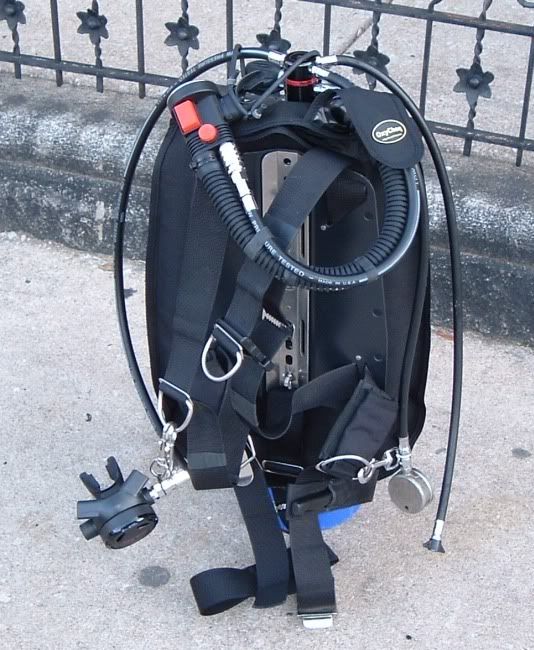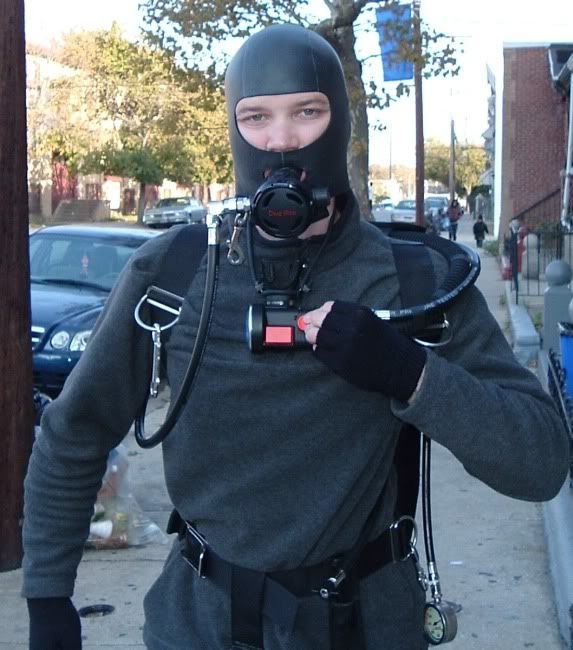There are two big advantages of the long hose system: One is the ease of deploying a regulator to share gas, and the other is that the hoses route tightly to one's body, so there are no big loops sticking out to get caught in anything, or simply to flap in the breeze

In order to keep things that way, the hose has to be routed in a way that works for its length.
The 40" hose simply passes under the diver's right arm and up to his mouth, but the angle is a bad one, so an angled/swivel connection is needed to make the regulator sit comfortably in the mouth.
The 5' hose runs under the diver's right arm, up across the chest to the left side of the neck, behind the neck, and around to the diver's mouth. This hose length is easily used by those diving traditional BCs, and is actually a pretty good compromise hose length. One never has to worry about the loop that's been tucked into the waistband coming out, and the hose lies neatly on the diver's body. The 5' length is not always adequate for men with big shoulders and chests, but in those cases, a 6' length will usually work.
The 7' hose runs down from the first stage, tucks under something at the diver's right hip (or a loop is pulled through the waistband), and then runs up across the chest just as described for the 5' hose. I have dived a 7' hose without a canister light or anything else at my hip to secure it, but I have also had the loop come out of my waistband in a very annoying fashion.
All three arrangements allow the diver to donate the primary and pick up a bungied backup for himself, which is the beauty of the arrangement.






 . Nah, this is the newest and latest, some day you guys will come back around to the future.
. Nah, this is the newest and latest, some day you guys will come back around to the future.

